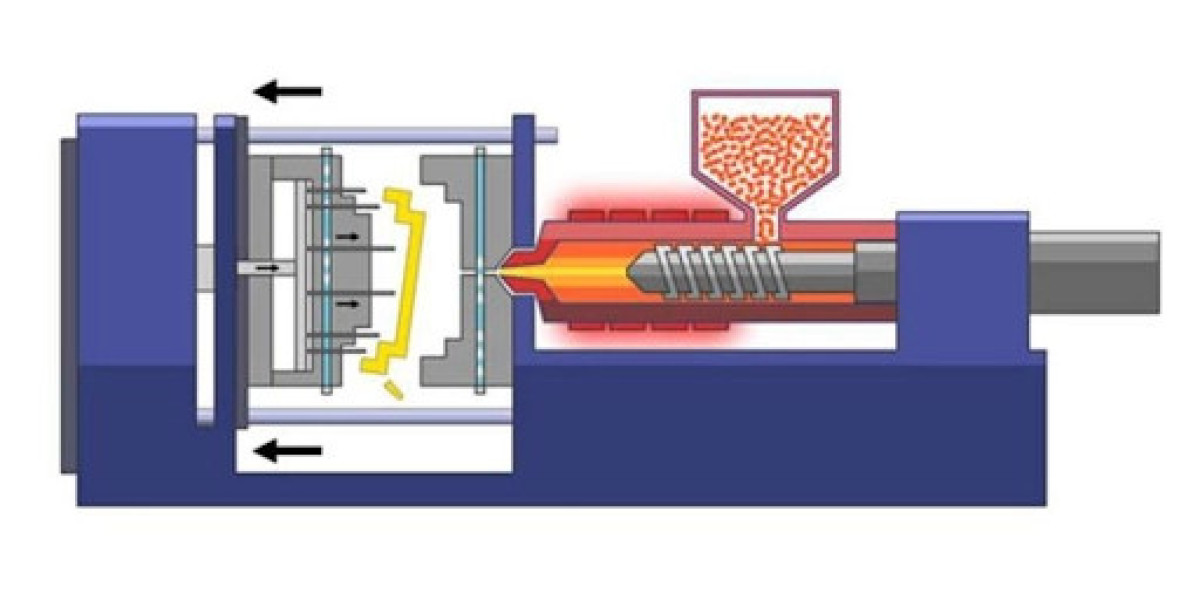Injection molding – ever heard of it? If you’ve ever used a plastic product, chances are it was made using this versatile manufacturing process. But what exactly is injection molding, and why is it so crucial in the world of manufacturing? Buckle up, because we’re about to dive deep into the fascinating world of injection molding.
What is Injection Molding?
Injection molding is a manufacturing process used to produce parts by injecting molten material into a mold. This method is widely used for producing a variety of items, from everyday consumer products to high-precision engineering components. Think of it as a high-tech version of making cookies with a cookie cutter – but with plastic or metal.
The Importance of Injection Molding in Manufacturing
Why is injection molding such a big deal? Simple. It’s incredibly efficient and versatile. This process allows manufacturers to produce complex shapes with high precision and repeatability, making it essential for mass production. Whether you’re looking at automotive parts, medical devices, or household items, injection molding plays a pivotal role in bringing these products to life.
History of Injection Molding
Early Developments
The story of injection molding dates back to the late 19th century. The first injection molding machine was patented by John Wesley Hyatt and his brother Isaiah in 1872. Their invention was designed to mold cellulose nitrate, a thermoplastic material. This marked the beginning of a new era in manufacturing.
Evolution Over the Decades
Since its inception, injection molding has undergone significant transformations. The introduction of new materials, advancements in technology, and improvements in mold design have all contributed to making injection molding the sophisticated process it is today. From manual machines to automated systems, the evolution has been nothing short of remarkable.
The Injection Molding Process
Designing the Mold
The first step in injection molding is designing the mold. This involves creating a detailed blueprint of the part to be produced and designing the mold to achieve the desired shape. The mold must be precisely engineered to ensure the final product meets all specifications.
Choosing the Right Materials
Selecting the right material is crucial for the success of the injection molding process. The choice of material depends on the application, the desired properties of the finished product, and the manufacturing requirements. Common materials include various types of plastics, metals, and ceramics.
The Injection Molding Cycle
The injection molding cycle consists of three main stages: injection, cooling, and ejection.
Injection
During the injection stage, molten material is injected into the mold cavity under high pressure. This ensures that the material fills all the intricate details of the mold, creating a precise replica of the desired part.
Cooling
Once the material has filled the mold, it needs to cool and solidify. The cooling time depends on the material and the thickness of the part. Proper cooling is essential to prevent defects and ensure the part maintains its shape.
Ejection
After the part has cooled and solidified, it is ejected from the mold. The mold is then prepared for the next cycle. This repetitive process allows for the efficient production of large quantities of parts.
Types of Injection Molding
Thermoplastic Injection Molding
Thermoplastic injection molding is the most common type of injection molding. It involves the use of thermoplastic materials, which can be melted and re-melted multiple times. This makes it ideal for recycling and manufacturing a wide range of products.
Thermoset Injection Molding
Thermoset injection molding uses thermosetting materials, which harden permanently after being heated. Unlike thermoplastics, thermosets cannot be re-melted. This type of injection molding is used for products that need to withstand high temperatures and mechanical stress.
Overmolding and Insert Molding
Overmolding involves molding a layer of material over an existing part, while insert molding involves placing a pre-formed part into the mold and then injecting material around it. These techniques are used to create complex parts with multiple materials and properties.
Materials Used in Injection Molding
Plastics
Polyethylene
Polyethylene is a versatile plastic used in a variety of applications, from packaging to automotive parts. It is known for its durability, flexibility, and resistance to chemicals.
Polypropylene
Polypropylene is another popular plastic material, valued for its strength, chemical resistance, and low cost. It is commonly used in automotive components, consumer goods, and medical devices.
ABS
Acrylonitrile Butadiene Styrene (ABS) is a tough, impact-resistant plastic used in products such as toys, automotive parts, and electronic housings. It offers excellent mechanical properties and a good balance of strength and flexibility.
Metals
In addition to plastics, injection molding can be used with metals. This process, known as metal injection molding (MIM), is used to produce complex metal parts with high precision. It is widely used in the automotive, aerospace, and medical industries.
Ceramics
Ceramic injection molding is used to produce intricate ceramic components for applications requiring high temperature resistance, wear resistance, and electrical insulation. This process is commonly used in the electronics, aerospace, and automotive industries.
Advantages of Injection Molding
High Efficiency
Injection molding is highly efficient, allowing for the mass production of parts with minimal waste. Once the mold is created, the process can be automated, reducing the need for manual labor and increasing production speed.
Design Flexibility
One of the biggest advantages of injection molding is its design flexibility. The process can produce complex shapes with high precision, making it possible to create intricate parts that would be difficult or impossible to manufacture using other methods.
Low Labor Costs
Because the injection molding process can be highly automated, labor costs are significantly lower compared to other manufacturing processes. This makes it an attractive option for producing large quantities of parts at a lower cost.
Common Applications of Injection Molding
Automotive Industry
The automotive industry relies heavily on injection molding for producing parts such as dashboards, bumpers, and interior components. The process allows for the efficient production of complex shapes with high precision, ensuring that automotive parts meet strict quality standards.
Consumer Goods
Injection molding is used to produce a wide range of consumer goods, from plastic bottles and containers to toys and household items. The process allows for the production of high-quality, durable products at a low cost.
Medical Devices
The medical industry uses injection molding to produce components for medical devices, such as syringes, surgical instruments, and diagnostic equipment. The process ensures that these components meet strict regulatory standards and are safe for use in medical applications.
Challenges and Solutions in Injection Molding
Material Defects
Material defects, such as warping, shrinkage, and voids, can occur during the injection molding process. These defects can be minimized by selecting the right material, optimizing the mold design, and carefully controlling the process parameters.
Mold Design Issues
Designing a mold is a complex task that requires careful consideration of factors such as material flow, cooling, and ejection. Mold design issues can be addressed by using advanced simulation tools, collaborating with experienced mold designers, and conducting thorough testing.
Process Control
Maintaining precise control over the injection molding process is essential for producing high-quality parts. This can be achieved through the use of advanced process control systems, regular monitoring and maintenance, and continuous improvement initiatives.
Innovations in Injection Molding
Advanced Materials
The development of advanced materials, such as high-performance plastics and composites, has expanded the capabilities of injection molding. These materials offer improved mechanical properties, chemical resistance, and temperature stability, making them suitable for demanding applications.
3D Printing and Injection Molding
The integration of 3D printing with injection molding has opened up new possibilities for prototyping and low-volume production. 3D printing allows for the rapid creation of molds and prototypes, reducing lead times and costs.
Automation and Industry 4.0
Automation and Industry 4.0 technologies, such as robotics, artificial intelligence, and the Internet of Things (IoT), are transforming the injection molding industry. These technologies enable real-time monitoring, predictive maintenance, and optimized production, leading to increased efficiency and quality.
Future Trends in Injection Molding
Sustainability Efforts
Sustainability is becoming increasingly important in the manufacturing industry, and injection molding is no exception. Efforts to reduce waste, recycle materials, and improve energy efficiency are driving the development of more sustainable injection molding practices.
Technological Advancements
Technological advancements, such as improved simulation tools, advanced materials, and innovative process control systems, are continuously enhancing the capabilities of injection molding. These advancements are enabling the production of more complex and higher-quality parts.
Market Growth
The injection molding market is expected to continue growing, driven by increasing demand for high-quality, cost-effective manufacturing solutions. The automotive, medical, and consumer goods industries are expected to be the primary drivers of this growth.
Conclusion
Injection molding is a versatile and efficient manufacturing process that plays a crucial role in producing a wide range of products. From its early developments to the latest innovations, the evolution of injection molding has been remarkable. As the industry continues to advance, we can expect to see even more exciting developments and applications in the future.
FAQs
Q. What is the most common material used in injection molding?
Ans: The most common material used in injection molding is polypropylene, due to its versatility, strength, and cost-effectiveness.
Q. How long does the injection molding process take?
Ans: The injection molding cycle can take anywhere from a few seconds to several minutes, depending on the complexity of the part and the material used.
Q. What industries benefit the most from injection molding?
Ans: The automotive, consumer goods, and medical industries benefit the most from injection molding due to its efficiency, precision, and cost-effectiveness.
Q. How does injection molding compare to other manufacturing processes?
Ans: Injection molding is generally more efficient and cost-effective for producing large quantities of complex parts compared to other manufacturing processes such as machining or 3D printing.
Q. What are the environmental impacts of injection molding?
Ans: While injection molding can produce waste and consume energy, efforts to improve sustainability, such as recycling materials and improving energy efficiency, are helping to mitigate its environmental impact.



